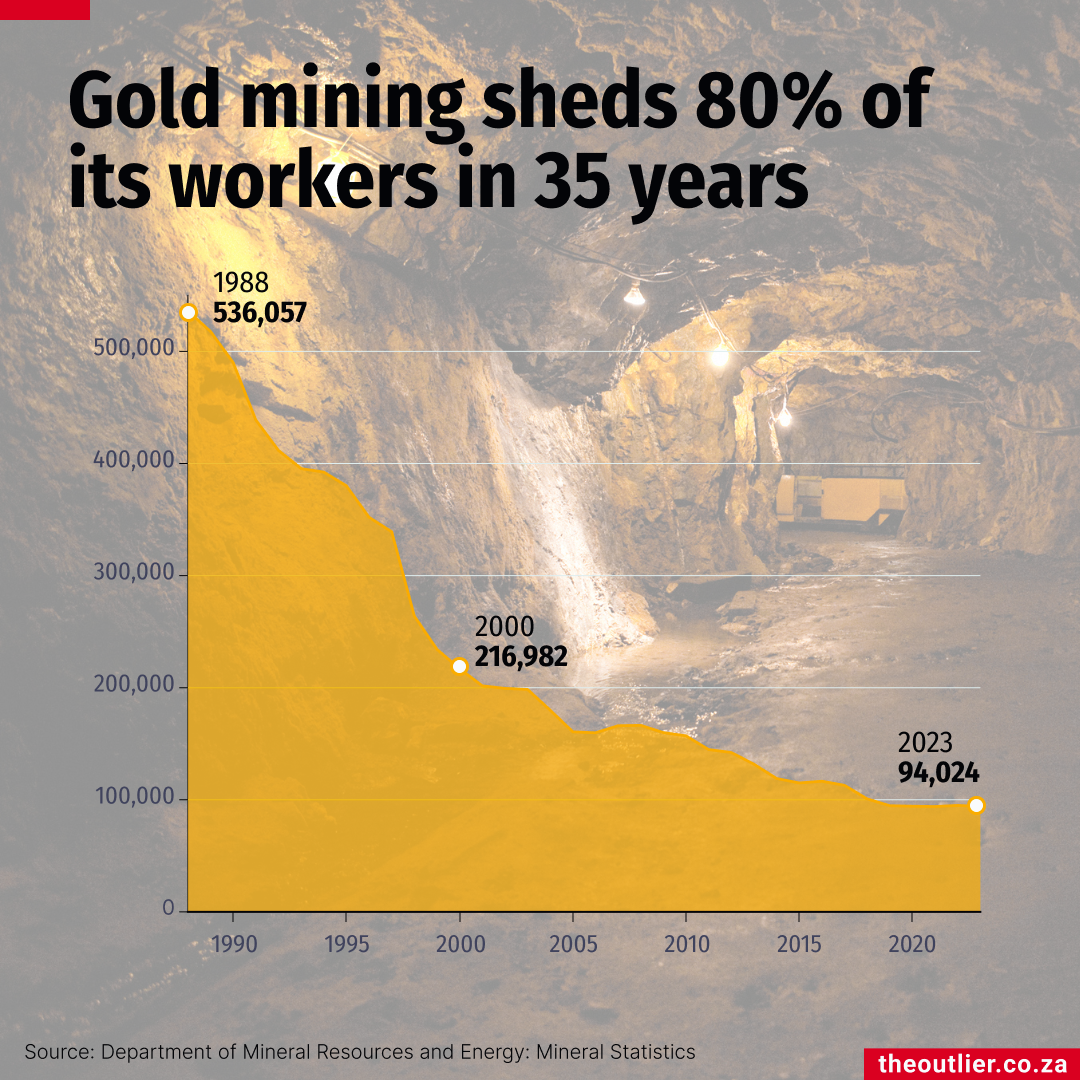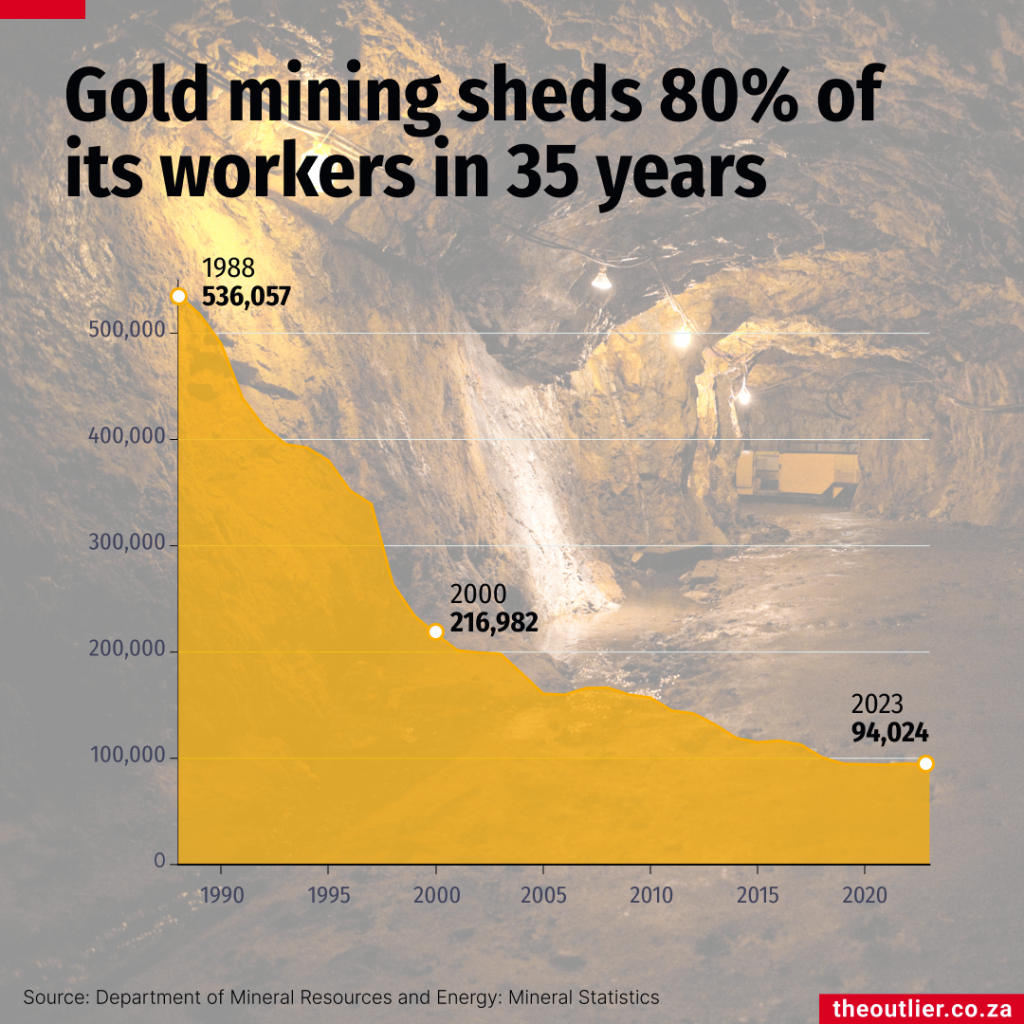
In 2024, South Africa recorded its lowest-ever number of mining fatalities: 42 deaths. That’s a significant improvement on previous decades. During the 1980s, mining deaths exceeded 700 a year, according to statistics from the department of mineral resources and energy. In those days, about 80% of the fatalities were in the gold sector. By 2024, only 26% of mining fatalities were linked to gold mining.
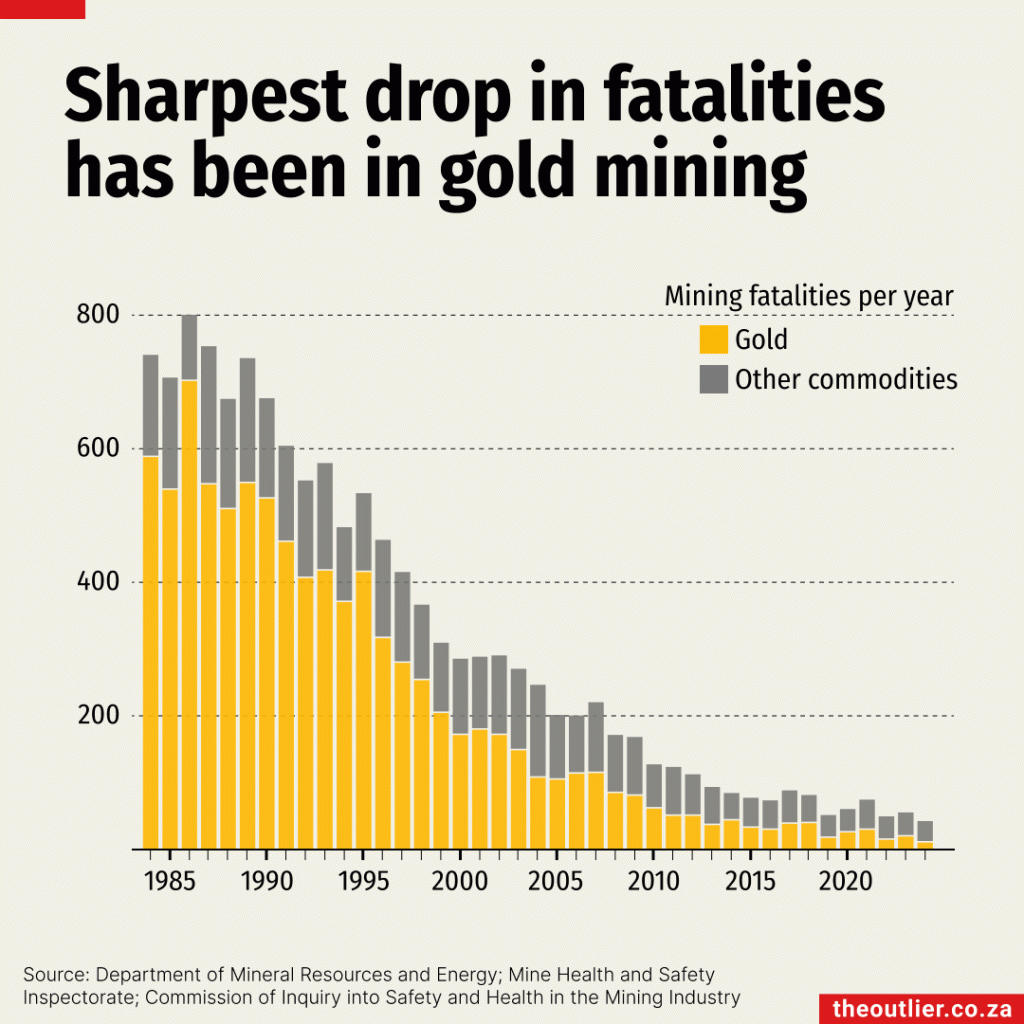
Things have changed a lot in the mining sector over the past four decades. In the early 1980s, mining contributed about 20% to South Africa’s economy; by 2023, its contribution had declined to 6.3%. Gold is also no longer the largest employer in the mining sector. The sharp drop in gold mining fatalities mirrors the decrease in employment by the sector. In 1988, gold mining employed just over 536,000 people. By 2000, that number had more than halved to 217,000; by 2023, it had fallen to 94,000.
Mining companies have closed hundreds of gold mines over the years. To reach the gold deposits, miners had to sink shafts to incredible depths, which made extracting the gold increasingly expensive. The amount of gold produced by South Africa had plummeted from 620 tonnes in 1988 to 97 tonnes in 2023.
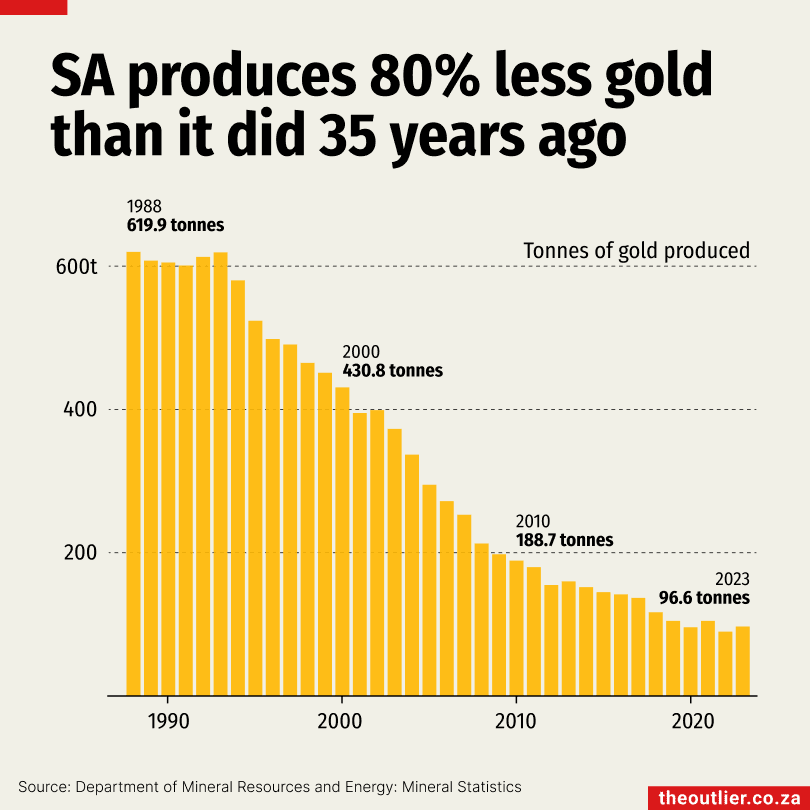
But the closure of gold mines doesn’t mean there’s no gold left in the ground. A 2023 PwC report found that South Africa had 68-million troy ounces of gold reserves left – enough for 27 more years of production.
There are an estimated 6,100 closed mines across South Africa, at least 700 of which are former gold mines, according to an Auditor-General report released in 2022. An informal mining economy has been growing around these sites.
Although the mines are supposed to be sealed, many are not. Desperate for work, former miners and other workers extract residual gold from old shafts under dangerous conditions.
These miners, known as zama zamas, operate without permits, making their activities illegal and they are dealt with harshly by the authorities. In January, 80 miners died in an abandoned mine in Stilfontein during a police operation that attempted to starve the miners out of the mine.
At a media briefing, Gwede Mantashe, the minister of mining and petroleum resources, said: ‘Illegal mining is not a mining activity, but a criminal activity… It is criminals attacking the economy.’
The number of people working as ‘illegal miners’ in South Africa is not known, but the phenomenon of informal mining is not unique to this country. The World Gold Council (WGC) estimates that 20% of global gold production comes from small-scale artisanal or informal miners.
Artisanal miners work in hazardous conditions, often under the control of criminal syndicates, the WGC report notes. With gold prices surging, reaching a record high of R54,110.90 per troy ounce in February 2025, this is a lucrative business – but the real profits flow to the syndicates running the informal operations.
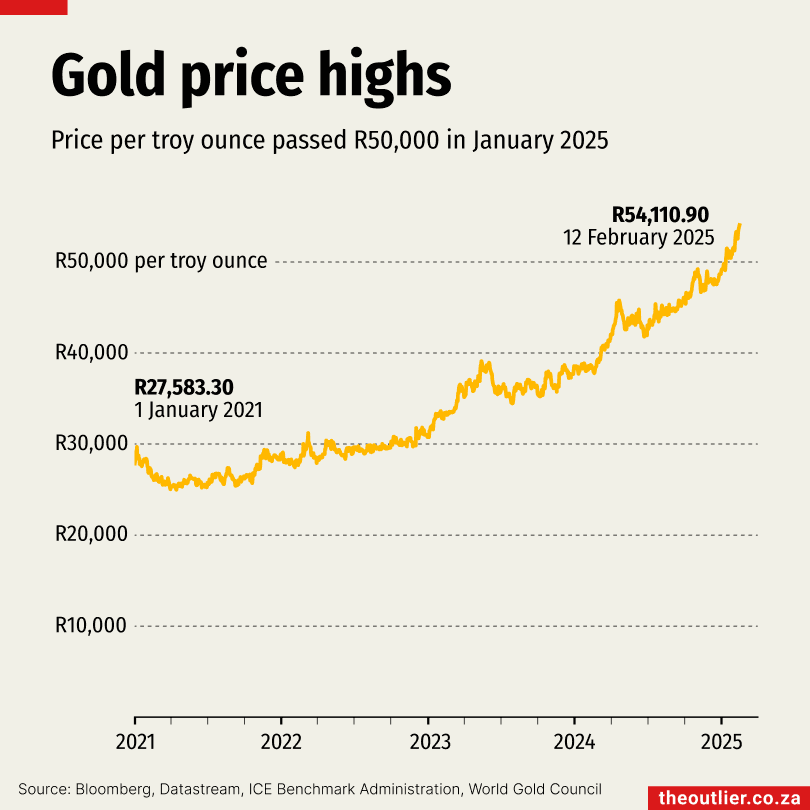
The World Gold Council says 25 tonnes of gold – valued at $1-billion – were smuggled out of South Africa in 2019, while Mantashe reportedly told a briefing in January that South Africa had lost R60-billion to illicit precious metal trade in 2024 alone.
To combat the exploitation of illegal miners, the council has urged the London Bullion Market Association, which sets standards for the global precious metals industry, to create a ‘Good Delivery List’ to track the provenance of gold from artisanal mining operations.
The WGC has also called on governments to formalise small-scale mining to reduce criminal influence and improve safety, which is something South Africa says it is trying to implement. Small-scale miners can apply for two-year mining permits on a first-come, first-served basis. But the industry remains largely informal, and the government says its participants, employment figures and socioeconomic impact are not properly documented.
Shifting landscape
Platinum and coal have overtaken gold in terms of people employed. South Africa has more than 80% of the world’s platinum group metal deposits and the number of people working in platinum mining has doubled from 85,000 in 1988 to 183,000 in 2023. Just over 96,000 people were employed in coal mining in 2023.
Chrome and manganese mining have also increased their employee numbers. These two minerals continue to grow in importance as they are critical for renewable energy-related products.

